State of the Computer Book Market, Q306, Part 2
Last week, I talked about the overall state of the computer book market. But most of our readers don't care about the publishing business. They care about the technologies we cover. Here's where we get to the meat: category visualizations and trends showing which technologies are winning and which are losing in the book market. Here's a treemap view of the quarter on quarter differences between Q3 of 2006 and the same period last year:
As I've previously described in Book Sales as a Technology Trend Indicator, in a Treemap visualization, the size of a square indicates the relative size of the category, and its color indicates the rate of change. A category that is bright green is up significantly. One that is bright red is heading strongly in the other direction. Colors that are more muted show smaller rates of change. For this image, I've also dragged a slider to show the enclosing category hierarchy, so only the top level categories are proportionally sized.
As you can see from the controls at the top of the display, we're showing quarter on quarter unit sales compared to the same period in the previous year. (Note: quarters are 13 week periods as closely aligned to calendar quarters as possible. Because Neilsen reports data weekly, and weeks don't match up exactly with quarters, we do a best fit.)
A few high-level observations:
- Web Design and Development has been the most substantial bright spot in the market, with 22% year-on-year growth in this category. This might well be expected in a period in which Web 2.0 is the buzzword du-jour. In addition to breaking topics like Ruby on Rails, AJAX, Javascript, and ASP.Net, there's been nice growth in books on web design and web page creation. Books on blogging and podcasting have also finally caught on, after several prior false starts.
- Microsoft's server release earlier in the year is still driving strong sales of books on C#, Visual Basic, and SQL Server. However, other database topics are also up modestly.
- The growth in books on digital photography has slowed considerably. If not for the inclusion of the iPod category, the Digital Media supercategory would be flat.
- The hardest-hit part of the market was books on consumer operating systems, down 17% from the same period a year ago.
- The professional development and administration segment was down 2%, but might have been worse but for the strong performance of Microsoft languages, Python, Ruby, software project management, and database topics.
Drilling Down Into the Data
As described in previous postings about our technology trend research, we've organized the Bookscan data into a five level category hierarchy. At the top level, books are grouped into Systems and Programming, Web Development, Digital Media Applications, Business Applications, Consumer Operating Systems and Devices, and Other. In addition, though, because books can only be in one category (tagging style approaches with overlapping categorization don't work when you want to count and compare), we do alternate rollups along dimensions that are of interest to us, such as programming languages, databases, and operating systems. (To understand the difference, consider for example that a Ruby on Rails book will appear in the RoR category, but also needs to be counted as a Ruby language book.)
Computer Languages
For this reason, we'll start with some of the alternate rollups, because they give a truer picture of the actual change in key areas. First, let's look at computer languages:
- Ruby has continued to grow apace, although its 255% growth rate is off last quarter's torrid 687% increase! Interestingly, PHP also picked up some steam, up 11% vs. last quarter's 6% YoY increase. Python's 27% YoY gain, up from last quarter's 6% gain, shows even more strength. In short, while Ruby has become the language of choice for many web startups, PHP and Python are both far from out of the game. With the addition of web frameworks like Django and Pylons, Python is becoming a real contender as a first rate language for Web 2.0 applications. (Google's commitment to the language doesn't hurt either, as Google is a hiring magnet, and Python skills are much in demand.)
- The decline of Java book sales has accelerated, while C# books have continued their steady increase. When you aggregate books on both C# ".Net Languages" (books that cover both C# and VB.Net), the C# book market is now about 12% larger than Java. (Of course, some of those .Net Languages book purchasers could be buying them for their coverage of VB.)
- Javascript book sales are up 152% -- actually less than we expected given the new release of JavaScript this fall. If you aggregate sales of ActionScript books with JavaScript (and ActionScript is, after all, a dialect of JavaScript), it is now the 2nd largest language (after Java), in terms of book sales. (It's third if you aggregate the ".Net languages" category entirely to VB rather than to C#. See the note above about Java vs. C#.)
- While sales are still tiny, we see signs that developers are taking a second look at languages such as Lisp and Scheme. Specialized languages such as MDX (used with SQL Server) and Lua (used for game programming) are also showing growth.
Databases
Looking at the Database rollup, we again see the strength of SQL Server, and the decline of Oracle book sales. MySQL books have also seen decent growth again, after a slower period. And the curious surge in PostgreSQL, which we noted last quarter, seems to have fallen off.
Note: due to the press of my travel schedule, and needing to grab screenshots at odd times, this treemap and the next are not dated precisely on the quarter boundary, but two weeks later. (I didn't manage to snap them before new data was added, and while resetting the date is possible, the differences aren't material.)
Operating Systems
The operating system rollup shows that, absent significant new releases, there's not a lot of action in operating system books. We do see some strength in Linux, principally driven by books on new distributions like Ubuntu. Books on blackberry also remain strong.
Systems and Programming Category View
Returning to the category by category view, let's take a closer look at the top level systems and programming category:
Much as was the case with Design Patterns last quarter, the strength of the project management category is really a testament to the strength of one book, Scott Berkun's Art of Project Management. Similarly, the user interface category jump is primarily driven by Jennifer Tidwell's Designing Interfaces, also from O'Reilly.
Two categories that surged, Data Warehousing and Data Analysis, should be no surprise to those who've followed our "data is the Intel inside" hypothesis. Wiley (and to a lesser extent McGraw Hill) has done a good job bringing books to market on this topic. (While we use data warehousing and analysis here at lot in our Radar group, and suggested this topic to our publishing group several years ago, we unfortunately never gave it enough priority. Shame on us. We did better in the Data Analysis category, with our bestselling Information Dashboard Design, the #3 book in the category behind The Little SAS Book and Tufte's Beautiful Evidence.)
The 80% growth in the Agile category is also one that shows the impact of Web 2.0 on development practices. Bestselling books include Microsoft Press's Agile Project Management with Scrum and Pearson's Agile Software Development with Scrum.
Strength in the Cisco category is primarily driven by certification books, dominated by Pearson's Cisco Press imprint. Similarly, the Microsoft programming category is primarily driven by MCTS certification books, and is dominated by Microsoft Press.
Finally, we see the continued interest in Linux distributions other than Red Hat, most notably Ubuntu, a fact that has been previously discussed on this blog. But also notable is the big jump in the category we label "proprietary Unix," but should probably be renamed "Solaris", because there are no other variants selling any books to speak of. Sun's move to open source Solaris seems to be giving it nice traction in the marketplace.
Web Design and Development
Here's a closer look at the top level categories in the Web Design and Development area:
As might be expected, the AJAX category is hotly contested, with O'Reilly's Head Rush Ajax nudging out Manning's trailblazing Ajax in Action for the top spot. O'Reilly's AJAX Hacks and Wrox's (Wiley's, that is) Professional AJAX are also doing very well.
(As I did last quarter, I'll note that the 0% showing for AJAX is an artifact. There were no AJAX books a year ago, so there's nothing to generate a rate of change. It is not zero, but immeasurably large.)
Ruby on Rails, another relatively new category, has also become very competitive. The Pragmatic Programmers' initial groundbreaking book, Agile Web Development with Rails, which once had the market to itself, now competes with at least three other titles, including the Prags' own Rails Recipes and Manning's Ruby for Rails O'Reilly's Ruby on Rails: Up and Running has taken the top spot, but the book is too new to know whether or not its sales level will stick.
Wrox's resurgence in Microsoft programming categories under Wiley's management can be seen in the ASP category, where Professional ASP.Net 2.0 is the category leader, with Microsoft's Programming ASP.Net 2.0 and Apress's Pro ASP.Net 2.0 in C# duking it out for a distant second place.
Blogging and Podcasting have hit the mainstream, as evidenced by the fact that the ubiquitous "For Dummies" books have now taken the dominant spot in each category.
Digital Media Applications
Next, let's take a look at Digital Media Applications:
Perhaps most striking in the Digital Media category is the shift from titles on Photoshop to titles on digital photography technique. (It's striking, but not surprising. After all, it's been nearly a year and a half since the release of Photoshop CS 2.) Once again, the mainstreaming of digital photography is shown by the huge sales of Digital Photography for Dummies, which outsells the #2 title in this category by nearly 3:1. However, what's also interesting are the strong sales of "niche" books, from those aimed at professionals like O'Reilly's The DAM Book: Digital Asset Management for Photographers to those aimed at consumers, like Thomson's Digital Wedding Photography.
tags:
| comments: 20
| Sphere It
submit: ![]()
![]()
![]()
![]()
0 TrackBacks
TrackBack URL for this entry: http://orm3.managed.sonic.net/mt/mt-tb.cgi/731
Comments: 20
[11.06.06 06:06 AM]
Something slightly off topic but probably related: Why do publishers still publish books with a hardcover followed by a softcover version with a large gap? This I expect would distort the figures by creating a lag between initial publication and sales ramp up (assuming softcovers always sell more than hardcovers).
I would have though this would be a more expensive method than simply publishing softback with a special hardback version. Is the profit margin on hardcover books greater than softcover books?
[11.06.06 07:14 AM]
hi tim,
info is cool.
When you generate the TreeMap, can we see the labels so that the background is BLACK irrespective of what color you use for that block. That will make it more readable.
thank you,
BR,
~A
[11.06.06 07:37 AM]
Am just wondering about the programming languages. I know there's one O'Reilly book about Borland Delphi and I can't see if it's sales are going up or down... :-)
Anyway, will there be more O'Reilly books about Delphi in the future or do we have to write them ourselves? ;-)
[11.06.06 07:07 PM]
Very interesting data...
Do you have any insight why Java is losing steam?
[11.06.06 07:42 PM]
Java is losing steam mainly because it was oversold (as the last/only language you would ever need) in the first place, because it's bondage-and-domination approach to programming is losing out to more flexible VM-based languages like Python and Ruby, and because Moore's law is negating the performance advantage it once had over those same languages.
Finally, the one remaining strength of Java, the ability of J2EE to paper over the cracks in massively heterogenous and distributed IT infrastructures caused by rampant M&A among the Fortune 1000 in the corporate world, is just damn unsexy.
Java is now destined to become the COBOL of the 21st century.
[11.07.06 05:45 AM]
Michael, Don't forget that Moore's law has to be weighed against the increase in processing needs. A performance difference of 1000 to 2000 % in comparison to Java limits Ruby to simplistic web apps. And the lack of unicode (on which XML heavily depends), two-phase-commit, proper threading, message queuing, connectors to all kinds of enterprise systems doesn't help either.
Ruby needs a VM, there's not doubt about that. Otherwise doing real work in Ruby always means writing much of it in C and dealing with all the ensuing platform dependencies. Just try to build a Ruby extension on Windows and Linux. I garantee you, that's not very sexy either.
And, just in case you have any delusions about that, heterogenous system landscapes are not going to go away. They're here to stay, they are becoming more diverse not less, and they're not limited to the Fortune 1000.
[11.07.06 09:44 AM]
Tim,
Who ever is responsible for the design and presentation of this actionable data set thats obviously a barometer for your business, please send them to an Edward Tufte conference (he'll be in SF for his annual presentation in December)
thats so horribly designed I almost lost my lunch.
I'm not sure why people tolerate horrible and inefficient presentation of data....
[11.07.06 10:14 AM]
Allen,
The screenshots aren't great, but I've seen it live, and it's a killer visualization.
[11.07.06 03:00 PM]
Allen -- I'm sorry you don't like the treemap, but I think you're wrong, and if Tufte doesn't like them, he'd be wrong too. We can spot tiny changes in more than 600 atomic categories, and get to a detailed trend graph on any of nearly 20,000 books in only three clicks. That's a powerful tool in my book.
There's a massive amount of data available on a single screen. And by my reading of Tufte, he'd think that's a good thing.
Also see Marc Smith's analysis of how Tufte's principles apply to treemaps.
[11.07.06 03:03 PM]
Simon -- while mainstream trade publishers do publish hardcover/trade softcover/mass market softcover in sequence (thus giving them three opportunities to sell at different price points), computer books are typically published in only one format -- large format trade softcover. So there isn't that kind of distortion in this market.
[11.07.06 07:37 PM]
Tim, if you had to name some reasons for the declining share of Java what would they be? Do you think if SunMicro open sources Java it would make a difference?
[11.07.06 07:40 PM]
"A performance difference of 1000 to 2000 % in comparison to Java limits Ruby to simplistic web apps"
I'll grant your performance figures for the sake of argument. First, Ruby is just the new-kid-on-the-block. Java is losing to all of the less strict languages, and Python (for instance) doesn't have the same performance and unicode problems.
Second, software-engineer-time is always more expensive than CPU-time. At least, that is true for the trendsetting alpha-geeks. Shops where the reverse is true are basically ones populated by armies of bottom-of-the-barrel code monkeys.
In fact, a command-and-control environment populated by fungible bottom-of-the-barrel code monkeys is exactly the one kind of place where Java's bondage-and-domination approach might actually be a benefit, because getting consistent results out of an inexpensive workforce is more highly valued than making increasing the productivity of your best developers.
As you can imagine, none of this does anything to make the technologies used in those environments seem any sexier (quite the contrary).
"And, just in case you have any delusions about that, heterogenous system landscapes are not going to go away. They're here to stay, they are becoming more diverse not less, and they're not limited to the Fortune 1000."
This is true, but other languages are just as adept or even better at gluing together heterogenous environments. But J2EE's design isn't for gluing disparate systems together, it is mainly aimed at hiding the heterogeneity (hence, 'paper over the cracks') through various abstractions. This is basically what EJBs are *for*.
Only in a completely fractured Fortune 1000 environment is the prospect of building 'one object model to rule them all' even close to a good solution, and even then, it is basically only in order to do an end-run around the inertia of various internal stakeholders.
This gives us this catchy tagline: "Java: Because anything is better than trying to actually replace the COBOL-running mainframes at the competitor we just acquired."
[11.08.06 04:23 AM]
It would have been great if a perspective was shared on book categories that O'Reilly avoids due to lack of competitive authors on their roster. Categories such as Enterprise Architecture, Security, and general academia would be interesting to chart...
[11.08.06 10:10 AM]
James -- I'm not sure I understand the thrust of your comments. I didn't talk about security because it's a declining category (despite the crying need for security). And O'Reilly is actually a strong player there -- #3 behind Wiley and Pearson, the two big conglomerates. I didn't talk about enterprise architecture because it's a tiny category.
It's true that some other publishers (like AW) have more of a presence in academic topics, but as the success of books like Head First Design Patterns demonstrates, when we target an area like this, we tend to make our mark.
[11.08.06 05:48 PM]
Tim, if I derailed the conversation, I apologize. I would actually like to hear your perspective on the Java questions that were asked by Regnard Kreisler C. Raquedan and Risento T. Becker.
[11.09.06 06:10 PM]
Michael -- do you mean reasons for the decline of Java?
I think that a number of the posters hit the nail on the head. New agile programming models that are central to web 2.0 apps are more easily performed in languages such as Ruby or Python.
And unlike Java, which is in its own ghetto in terms of programming tools, Microsoft has done a better job of providing a programming environment that can "swing both ways." Visual Studio does a lot to support web programming with ASP.Net, letting users move easily between languages with the same programming model, "choosing the hat to fit the head," while Java still tries to pretend that it's the universal hammer, even though our research shows that a lot of developers use Java side by side with Ruby or Python or Perl. Sun needs to focus on being more language independent.
[11.25.06 10:06 PM]
Tim, came upon this a little late, learned something as always and am thankful, but couldn't help but notice your comment about O'Reilly's Head Rush Ajax taking over the top Ajax spot over Manning's Ajax in Action. That graph you guys like to site confuses me as well so I'm not surprised that you may have misread it, but I have to differ with your findings. It happens that a part of my job at Manning is to pay attention to such data, and since my numbers come from the same engine that churns out your own, one of us has to be wrong. I had a second look, and my numbers say that, while Head Rush enjoyed a few weeks at the top just after its release, if you track the long run you will see that Ajax in Action in fact has consistently maintained its position as the No 1 selling Ajax title hands down. I check BookScan weekly, and the Amazon rankings. All tell the same story.
Not a big deal, but it seems important nonetheless to keep the record straight. We humble Manning folk are rather proud of Ajax in Action, and though Head Rush Ajax is a nice little book, the numbers and rankings (and reviews, for that matter) do not lie, as they say.
[11.26.06 07:14 AM]
Ron --
There's no question that in terms of lifetime sales Ajax in Action, the first book out, is the top seller. But counting from April 1, which is about when Head Rush Ajax was published, it has sold about 400 copies more than Ajax in Action per bookscan.
As I said in the piece, they are neck and neck, and well ahead of the next book, Ajax Hacks, though that is also doing pretty well.
[12.31.06 06:17 PM]
Tim,
Bit late getting back to an old thread, good stuff on the App the screen shots must not do it much justice then
Have a good 07



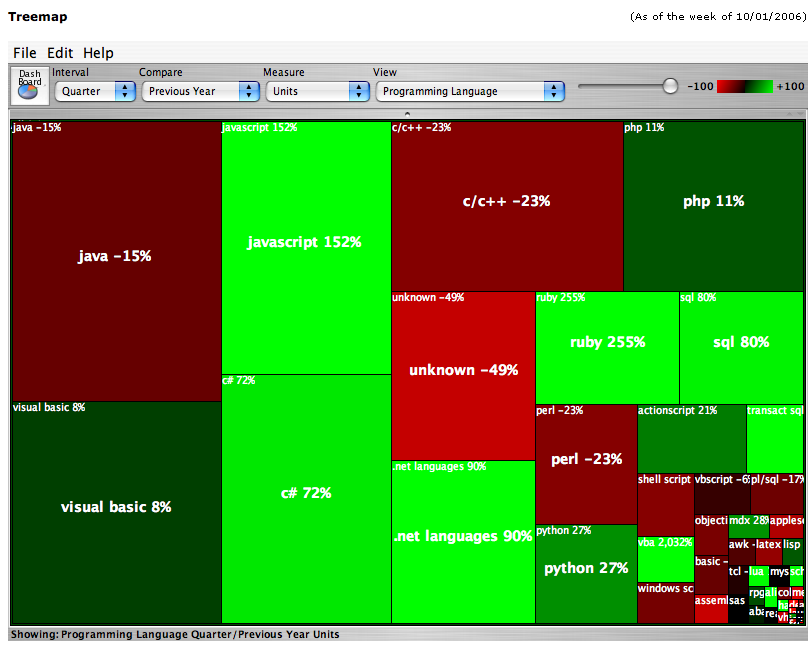
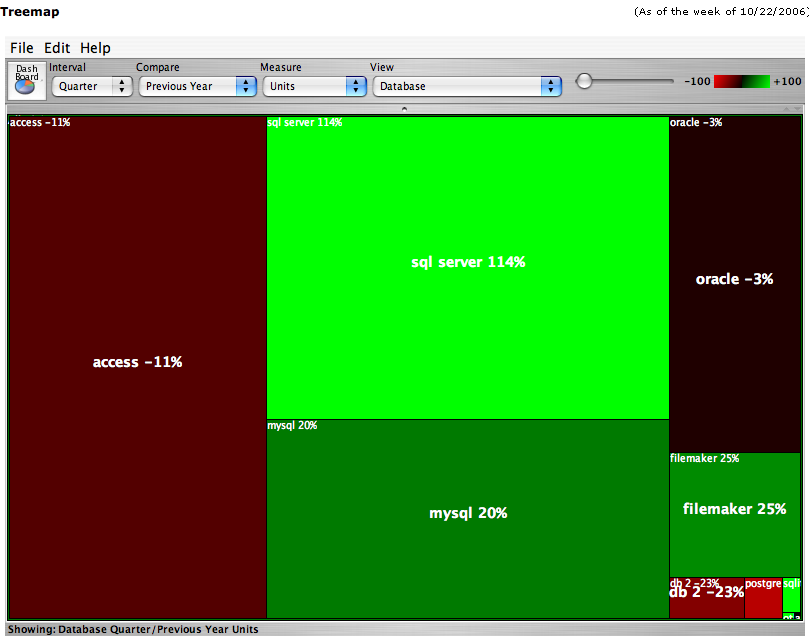
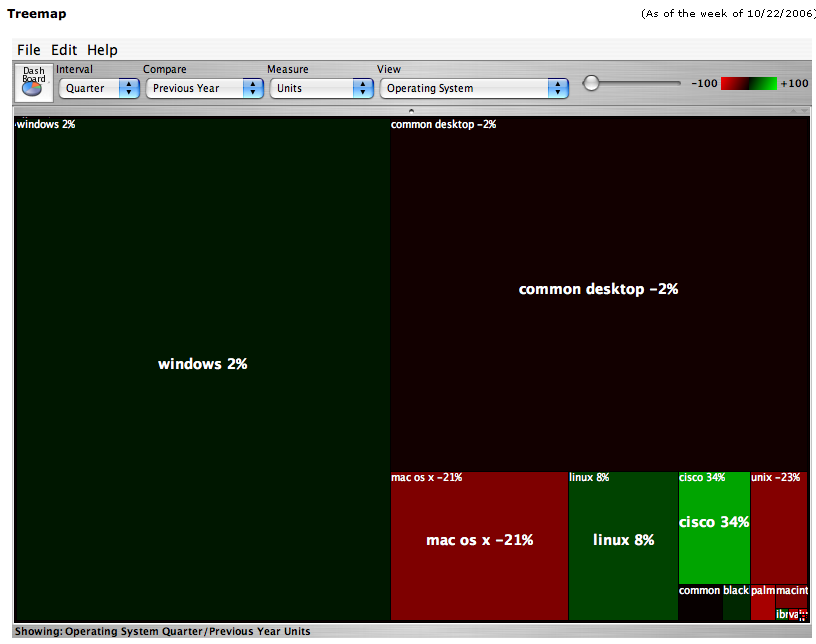
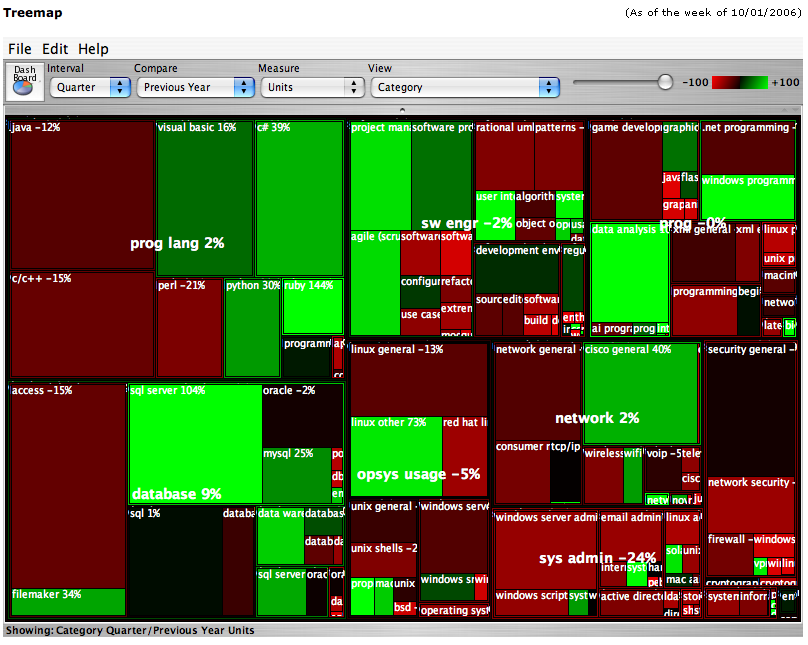

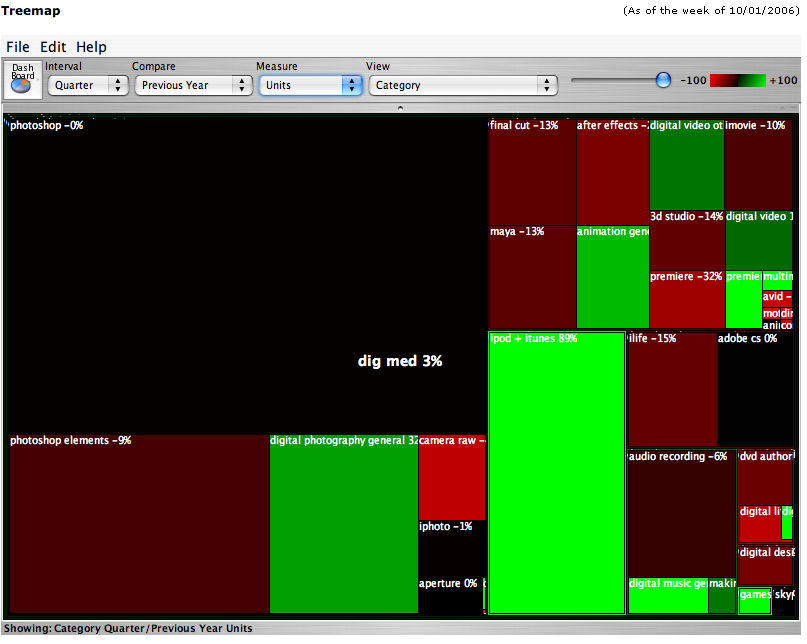


Denis The SQL Menace [11.06.06 06:04 AM]
SQL Server is still going strong.
Kalen Delaney's "Inside Microsoft SQL Server 2005: The Storage Engine" and Ken Henderson's SQL Server 2005 Practical Troubleshooting: The Database Engine" will only add to that surge since these are the books that a lot of professional SQL server developers consider a must have